Okay, I admit, this is sad. My last post was over a year ago. Since this is a radio blog you may be inclined to think I haven’t been doing radio, or building projects, or
Our Community Emergency Response Team (CERT) has been a big part of things over the last year. As the amateur radio Emergency Coordinator for ARES/AUXCOMM here in Klamath County I am parallel to the CERT Coordinator though most of our active volunteers are involved in both so we have been working on division-of-labor concerns and coordinating activation, reporting, and assignments.
We also had some administrative changes with Emergency Management being reassigned under the Sheriff. So far it seems to be a good move. One thing I just found out about is an asset being transfered to CERT/AUXCOMM. We are getting an old ambulance to build into a mobile radio and CERT response vehicle. We have a trailer, but there are advantages to having a ready to roll vehicle with a giant generator at the front end. The story of this asset will develope over time. We still don’t have a timeframe for the transfer.
Rebuilding the KBARA packet infrastructure took up a lot of time last year. It has been running stable and continuously since my last post with minimal maintenance required. Our mountaintop sites weathered the winter season well and we are working on several new projects that rely in part on this packet infrastructure.
One such project is getting a full-featured Winlink amateur radio gateway up and running. The Civil Defense Communications Auxiliary, more on this in a minute, just installed a packet gateway accessible to much of the county. The gateway is hosted by the Sky Lakes Amateur Radio Association who’s assets are provided by the Sky Lakes Medical Center, relies on the KBARA packet infrastructure, and provides Winlink email access to the entire emergency communications community and the ham community in parts of northern California and southern Oregon. A great cooperative effort that benefits a lot of people.
The project is not completed this is just the first stage. Next up is adding HF access, and
CDCA is one of my big projects. It was set up as a 501(c)(3) non-profit the Civil Defense Communications Auxiliary. Its purpose is to provide material and training support. The Sky Lakes Gateway Project is a good start. Many more projects too come.
Volunteer Examiner sessions have been sparse with only one session per quarter. I miss doing them more frequently.
One of the things I spent a lot of time on this year was getting authorized as an ARRL emergency communications Field Instructor and Field Examiner. This is primarily for ARES which has been going through a lot of changes this year. I recently qualified as a mentor/instructor for the ARRL’s online training for the EC-001 Introduction to Emergency Communications course. I have signed up to mentor for the first four two-month class cycles of the new program and am looking forward to the experience.
ARES/AUXCOMM is a big topic. The state of Oregon recognizes the ARRL’s Amateur Radio Emergency Service program statewide. Some counties have opted for other organizations like ACES or autonomous organizational structures like AUXCOMM. Within the county, Klamath has an AUXCOMM team but it is at the same time an ARES team. As I mentioned earlier CERT is also a big part of the mix because of the extensive crossover in personnel and assets. This
After time and energy in both, I have turned focus to the Training Manual by creating a training matrix, then developing a program to meet the modular elements on the grid. Eventually, all of this will be written into a manual. From the Training Manual, the Operations Manual containing only procedural elements. When device specific or asset specific operations that require a check-out will point to the TM in an appendix. Once I get the base manuals written I will post them. This is a long-term project.
I still participate in the Nation Traffic System as a local net manager, Net Control Station, and participate in state and regional nets. 80 meters has been crappy over the winter so I have not been able to participate as much as I’d like. This has also curtailed a lot of my general HF operations, and limited Winlink radio access.
The poor propagation and a harsh reality exposed by the Fall SET (Simulated Emergency Test) was a major prompt to get a local packet and HF gateway, as well as up our game on the tech for the gateway.
One of the things I have been doing more of, particularly recently, is equipment R&R. I have a growing pile of radio gear to go through and reset, repair, document, determine what it is, or combine with other bits for operation. I love doing this but I have little bench space or time to dig into some of these projects, but I will find the time.
I ended my last post with “try not to wait four months”…
~Jon KK6GXG

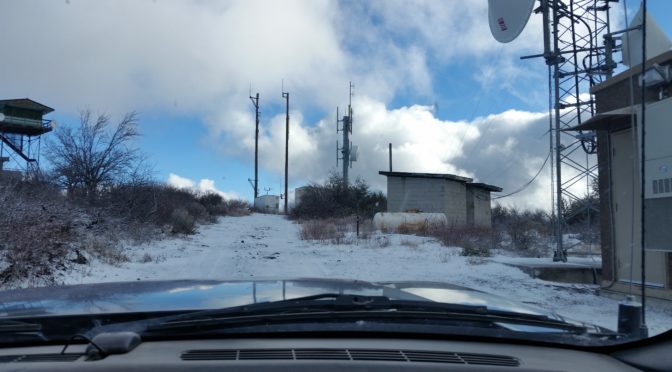
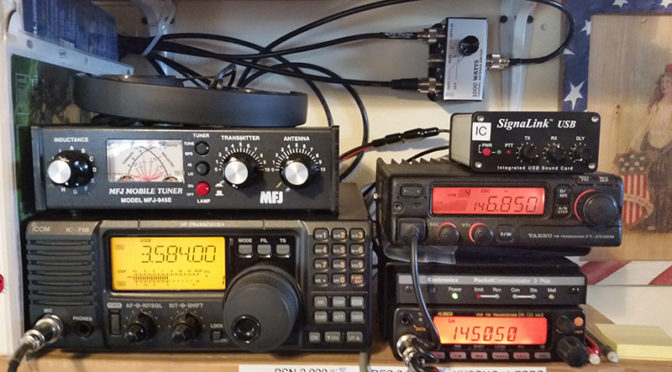
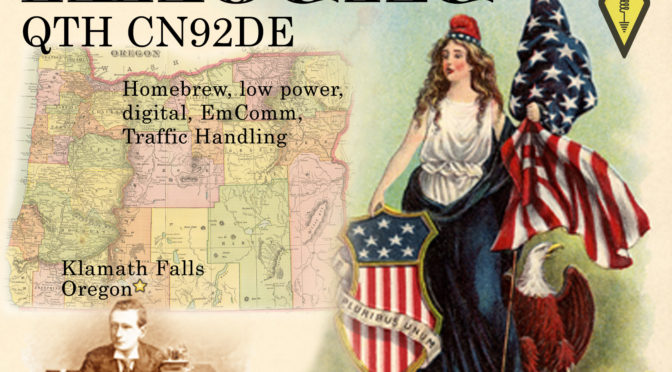
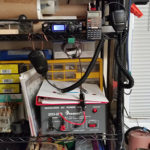 You can see why I haven’t posted in a while. I have made some upgrades to the shack, well the mobile, the shack is looking rather minuscule right now.
You can see why I haven’t posted in a while. I have made some upgrades to the shack, well the mobile, the shack is looking rather minuscule right now.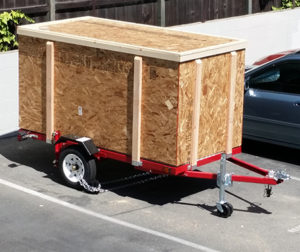 This weekend, June 24-25 is trailer build time, so another Field Day goes by unobserved… Sad about not getting the new FT-817 on the air for FD, but the move takes precedence. The good news for radio is that I have a place to set up a 136′ multi-band horizontal end-fed with the mast just a few feet away from the shack’s new location.
This weekend, June 24-25 is trailer build time, so another Field Day goes by unobserved… Sad about not getting the new FT-817 on the air for FD, but the move takes precedence. The good news for radio is that I have a place to set up a 136′ multi-band horizontal end-fed with the mast just a few feet away from the shack’s new location.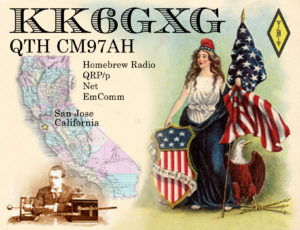

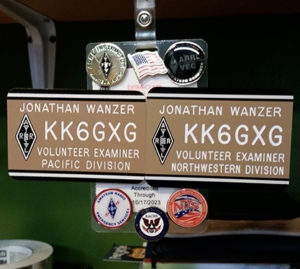 Another early prep purchase was my VE/Callsign tag. Moving to a new Division, I figured I would be a good idea to get a badge with the new division on it.
Another early prep purchase was my VE/Callsign tag. Moving to a new Division, I figured I would be a good idea to get a badge with the new division on it.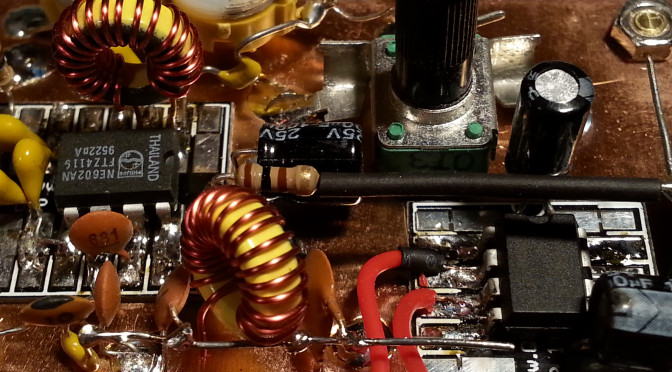
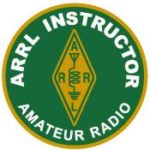
 In recent months the chatter has been about the ham population. Two specific areas have topped the conversations. The first is centered on the retention of Volunteer Examiners and engaging the VE community. The second topic of conversation has to do with a special anniversary coming up in a few days.
In recent months the chatter has been about the ham population. Two specific areas have topped the conversations. The first is centered on the retention of Volunteer Examiners and engaging the VE community. The second topic of conversation has to do with a special anniversary coming up in a few days.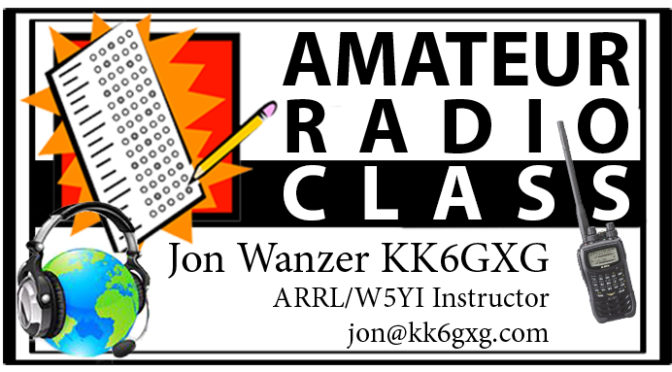
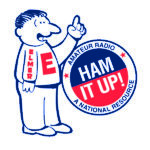

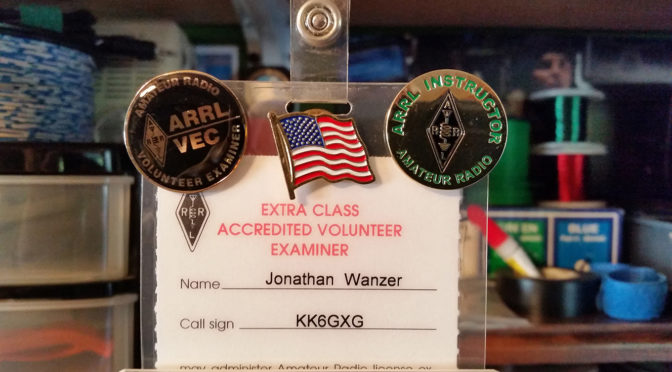
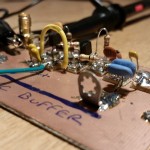 From a building stand point… nothing new has been going on. I am still working on the Beach 40 and the Bitx 20. The Beach 40 still needs the audio section rebuilt and the Bitx20 needs some troubleshooting . I don’t have the facilities to put up a 20 or 40 meter antenna and since both radios are QRP(p), a good antenna is vital to making any contacts.
From a building stand point… nothing new has been going on. I am still working on the Beach 40 and the Bitx 20. The Beach 40 still needs the audio section rebuilt and the Bitx20 needs some troubleshooting . I don’t have the facilities to put up a 20 or 40 meter antenna and since both radios are QRP(p), a good antenna is vital to making any contacts.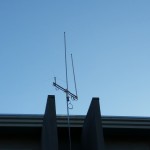 From an operators perspective… ya, nothing going on there ether. I need to pull down my Frankenstein/Hill Billy mast because we are having our building painted soon. I have plans for a simpler replacement that should work out fine. I’ll post about that if and or when that happens.
From an operators perspective… ya, nothing going on there ether. I need to pull down my Frankenstein/Hill Billy mast because we are having our building painted soon. I have plans for a simpler replacement that should work out fine. I’ll post about that if and or when that happens.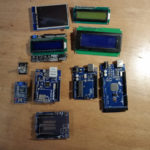 Earlier this year I picked up some Arduino hardware. I haven’t had much time to work with it yet as the Day Job has been keeping me hopping as well as a lot of stuff in the personal life, nothing bad, just a lot of changes and preparations.
Earlier this year I picked up some Arduino hardware. I haven’t had much time to work with it yet as the Day Job has been keeping me hopping as well as a lot of stuff in the personal life, nothing bad, just a lot of changes and preparations.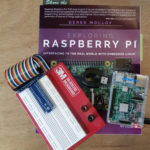 Last week I added a RPi 3B to the hardware pile and began working with it. Along with the Pi I picked up a copy of Exploring Raspberry Pi: Interfacing to the real world with embedded Linux From Wiley written by Derek Molloy.
Last week I added a RPi 3B to the hardware pile and began working with it. Along with the Pi I picked up a copy of Exploring Raspberry Pi: Interfacing to the real world with embedded Linux From Wiley written by Derek Molloy. P.S. Today’s post is brought to you by Hamversary. On this day in 2013 I received my license grant about a week after I walked into the Saratoga Fire Station a non-ham. Since then I have worked my way up to Extra Class, begun teaching license preparation classes to prospective hams, and I have been a Volunteer Examiner for 42 exam sessions, most of them at the Saratoga Fire Station.
P.S. Today’s post is brought to you by Hamversary. On this day in 2013 I received my license grant about a week after I walked into the Saratoga Fire Station a non-ham. Since then I have worked my way up to Extra Class, begun teaching license preparation classes to prospective hams, and I have been a Volunteer Examiner for 42 exam sessions, most of them at the Saratoga Fire Station.
 The July 8th class went of rather well. I am happy to report that we introduced 5 new hams to the community!
The July 8th class went of rather well. I am happy to report that we introduced 5 new hams to the community!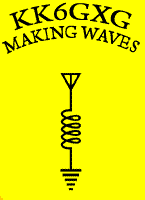 Just a short update on getting a Technician ham license for interested locals (Silicon Valley area).
Just a short update on getting a Technician ham license for interested locals (Silicon Valley area).